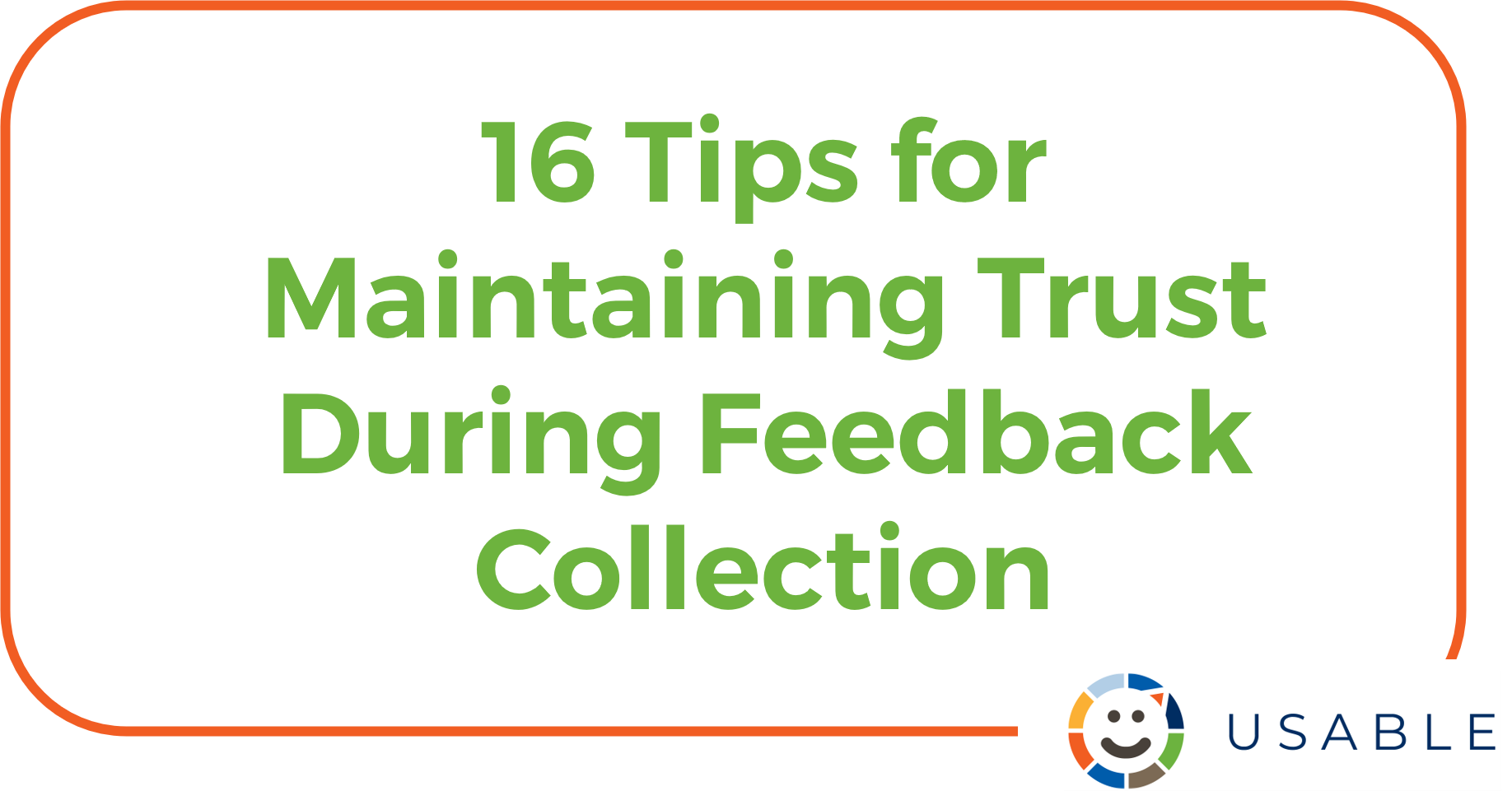Trust is always a prerequisite for working with at-risk communities, but it becomes increasingly important when you are gathering feedback. If trust has been established, users are more likely to participate in the feedback process and provide honest responses without fear of judgment or risk.
This resource is designed for organizational security auditors, digital security trainers, and other practitioners who have already built and established trust with an at-risk community and are planning to collect feedback on privacy and security tools from the community.
Tips for Maintaining Trust During Engagements & Feedback Collection
Though trust can be established prior to an audit, training, or user engagement, the facilitator must take action to maintain and uphold that trust throughout the event. Below are suggestions to help ensure that participants feel safe and supported throughout the entire feedback collection process.
Communicate transparently with partners about what you will be doing together and outline the overall plan. Be sure to manage expectations about time and involvement. Explain how the feedback you are collecting will be used and what impact it may have long-term.
Collaboratively establish rules or protocols for the gathering to ensure people feel safe (i.e. no photos, no social media posts, Chatham house rules, etc.). Confirming confidentiality at the beginning (and maintaining that confidentiality) can also help participants open up.
Where possible, conduct feedback collection in the local language. Participants will likely be able to more easily share challenges, frustrations, or features that they appreciate in the language they are most comfortable with.
Follow through on your commitments and be communicative throughout the process.
Identify and highlight something positive that you hear or learn from participants in order to help them build their confidence. It can be useful to begin a training or audit by collecting best practices. This will demonstrate to participants that they already take certain actions or use certain tools and reassure them prior to beginning.
Encourage participants to share challenges or mistakes from the perspective of someone else (perhaps a persona), so they do not feel shame in sharing.
Explain technical concepts in accessible language so that people can understand how technical tools work and do not feel overwhelmed by complex terms and concepts.
Remind participants that you are not testing them as users, but rather you are testing the tool.
Ensure that your team of facilitators is diverse and representative of the community or organization with which you are working so participants feel comfortable. You can also provide opportunities for participants to be co-facilitators. Cascading or transferring information to a trusted member of the organization or community can be an effective way to communicate a message.
Encourage questions throughout the session and provide different ways for people to engage (verbally, written, etc.). It is critical that you listen to participants. Continuously check-in with each participant and follow-up afterwards via phone or email.
You should plan for the engagement to be interactive and immersive, but you should also be adaptable and adjust as needed.
Location can also play a large role in making sure participants feel safe to fully engage, without fear or distraction. If funding permits, host events in a neutral location.
Give honest and straightforward answers, and respond as quickly as possible to requests for support. You should always be clear and specific about the functionalities of tools so organizations and communities can choose the tool that best fits their threat model.
Ask open-ended questions, and create space for storytelling and exploring emotions.
Include short movement activities, which allow for linking body and content (i.e. finger ladders, shoulder rotation, etc.).
Utilize privacy-preserving measures when collecting feedback from at-risk users. This may require you to use aliases, assign numbers, etc. to ensure that you are not linking results or feedback to specific individuals.
Whether you are just getting started building trust with a new organization or community or you are eager to begin collecting feedback from existing partners, these tips and suggestions will help ensure you are centering the wellbeing of your participants while effectively collecting critical feedback from at-risk users.



